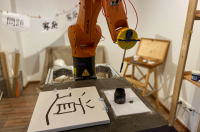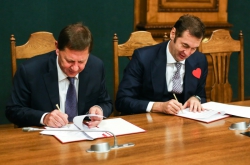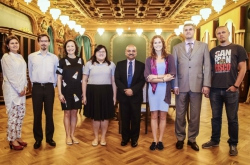You are the author of numerous works and projects in the field of information and communication technologies. What is some of your key research right now?
I lead a laboratory registered with the Brazilian National Council for Research and Development (CNPq). We have two main areas of research: the Internet of Things and the next generation of networks and applications. Overall, we work on a wide range of topics related to IoT, and that includes architectures, protocols, and applications. We also tackle topics that are relevant to vertical areas such as smart cities, smart homes, smart healthcare, or agricultural technology. We also deal with security issues, and IoT management.
As for our second area of focus, we deal with the topics of digital healthcare, vehicular communications, and high-speed networks. We also work with other labs and are actively involved in international partnerships. Our relationship with ITMO University began five years ago and still continues.
What was the starting point for your collaboration with Russian researchers?
My colleagues from ITMO University got in touch with me after submitting a paper to one of the international journals of which I am the editor-in-chief; we exchanged messages and they invited me to visit. I first came here in 2014. Since then, we began to develop and expand our collaboration. Over the course of several years, I participated in a number of studies affiliated with ITMO University.

I work quite closely with the International Laboratory “Technosphere Safety” headed by Prof. Valeriy Korotaev of the Faculty of Applied Optics. The staff there are creating optical sensors and optical and electronic systems. As for my part, I help develop the methodology and topics, and serve as advisor on several projects. These are my international responsibilities. Currently, I am involved in other international activities: I am a member of the IEEE Communication Society’s (IEEE ComSoc) Board of Governors, where I am currently the Director for Conference Development.
You often give lectures on the Internet of Things. Your lecture at ITMO University today was also about this topic.
For my lecture today I reported on the development of IoT and pointed out several subjects related to trends and perspectives for IoT, including next-generation mobile communication technologies based on 5G networks. I also touched upon some aspects of heterogeneity, scalability and the various applications that could have a significant impact on people’s lives. We must not forget that, as scientists, our main goal is to create new technologies and new solutions that would make life better. I also spoke a bit about my current research.
Speaking of the Internet of Things… Every day the media reports on new developments in that field. IoT is indeed becoming a part of many sectors of the economy. What opportunities, in your opinion, will we soon be able to unlock thanks to the development of that industry?

When talking about key research in ICT, as well as the technology that’s currently in development, we need to outline three primary trends. The first is the Internet of Things itself. The second is mobile communications, 5G and so on. And the last trend, which has recently spawned a new economy, is Big Data and Analytics, i.e. how we can very fruitfully utilize the massive accumulated amount of data. A good example is what companies like Facebook and Google are doing. I believe these technologies could have a very strong impact on our future.
And since we’re talking about technology that has the potential to change our lives and our cities in the nearest future, we must remember about unmanned vehicles. This is an industry that uses a great deal of new technologies that are having an effect on engineering, urban management, and, eventually, on modern society.
There are billions of cars in the world now, and we have a lot of traffic-related issues. But I believe that, by changing our mindset, we might begin to use cars as a service, not property. I’m talking about car sharing. At some point, people will no longer require cars so much. To provide an analogy, I think it will look much like it did with cellphones. As I was growing up, we didn’t have any cellphones, but today we’re seeing just how much of an effect they are having on our life. I believe that, in the future, we’ll be able to give the entire public transit system a significant rehaul; you will no longer have to decide who will take your child to school, because such things will be done using driverless cars.

We’re already seeing the first signs of these things today. It’s notable that new cars these days are made not by regular car manufacturers, but by their new, hi-tech counterparts. Google, Uber and Tesla are some of the ones behind the most promising prototypes, not the automotive giants that we know.
Still, many of the existing well-known cases in IoT are, for the most part, made for industrial use and not for consumers...
The biggest opportunity that the Internet of Things provides us with is that we can connect any device to the Web, be it a compact device or a massive plane. It lets us do many things, such as interact with the environment and, at the same time, collect a great deal of information from that environment. It makes life easier as well as helps us provide more security and comfort to people in many aspects of their lives.
It changes how people participate in society on a global level; for instance, we can quickly and easily send data to various government bodies, and, at the same time, monitor how that data is being used and what sort of activities the state undertakes, and so on. Other familiar paradigms are also changing, like, for instance, employment. You can see that today people have a lot more opportunities to work remotely.
I believe that these technologies are helping us improve productivity and efficiency, and better manage our resources. This is, undoubtedly, a revolution for the industry. In the old days we had manufactories; then, we had production lines; later, we began to use ICT in manufacturing; but it is said that the fourth Industrial Revolution lies with the Internet of Things. Productivity, automated production and security: these are very promising prospects. And we hope that in the future, we’ll produce more by using less. In this way, 3D-printing also will play a key role.

There are still quite a few issues in this field, too. One of the biggest is, of course, safety, while others include high costs, low mobility and self-sufficiency, and so on. What are specialists today doing to tackle these challenges?
From a research standpoint, security is indeed the biggest challenge to those working in the field of IoT. It’s a core issue that threatens all technology unless we find effective solutions that would ensure security. It’s no secret that technologies of this kind can even be turned into weapons of war. Imagine a scenario: a system running a smart city is under attack. What happens next? Complete chaos: chaos on the road, chaos in the healthcare system, water distribution, and so on. The risks are very high, and governments of countries are, understandably, concerned.
One promising approach, in my opinion, is the further development and application of quantum communications. ITMO University, too, is among those working in that field, and they’ve produced some great results. I think that in the future we’ll be able to take it further and introduce these technologies in real deployments.
Another important technology, which already exists and sees much use in fintech and cryptocurrency, is blockchain. It’s a technology that may ensure safe transactions between agents.

So when do you think we’ll be able to see these methods used in real life?
We already have a few examples of these technologies being used in smart cities. We can’t produce any results right now because this kind of research involves millions of interconnected objects. And that’s a challenge, too. That’s why I mentioned such aspects as heterogeneity and scalability.
Do you plan to continue your collaboration with ITMO University? What projects would you like to work on with the university’s researchers?
I’m always open to further cooperation with ITMO University and I’ve stressed that ever since we first started working together. It is my hope that, for its own part, ITMO is also ready to ensure our further fruitful collaboration. I believe that the university has brought some very powerful competencies to our team. Moreover, I have no doubts that we can expand our partnership further and produce great results. We plan, also, to extend our cooperation at the level of Inatel’s PhD Program on Telecommunications. I also do not doubt that our work can have an impact on the international community and make ITMO University’s achievements evident to the world.
I can see that the university is capable of ensuring working conditions of the highest level. And I believe that, for my part, I can assist in promoting these results. I’m confident that we are moving in the same direction.
Joel J. P. C. Rodrigues is a professor at the National Institute of Telecommunications (Brazil) and senior researcher at the Instituto de Telecomunicações (Portugal). He is an IEEE Communications Society (IEEE ComSoc) Distinguished Lecturer, a member of the IEEE ComSoc Board of Governors and its Director for Conference Development. Prof. Rodrigues is the author and co-author of more than 650 studies in peer-reviewed international journals. He is the recipient of several IEEE ComSoc awards and several best papers awards.
More: https://www.comsoc.org/distinguished-lecturer/distinguished-lecturer-joel-rodrigues http://lattes.cnpq.br/2907270080464933





